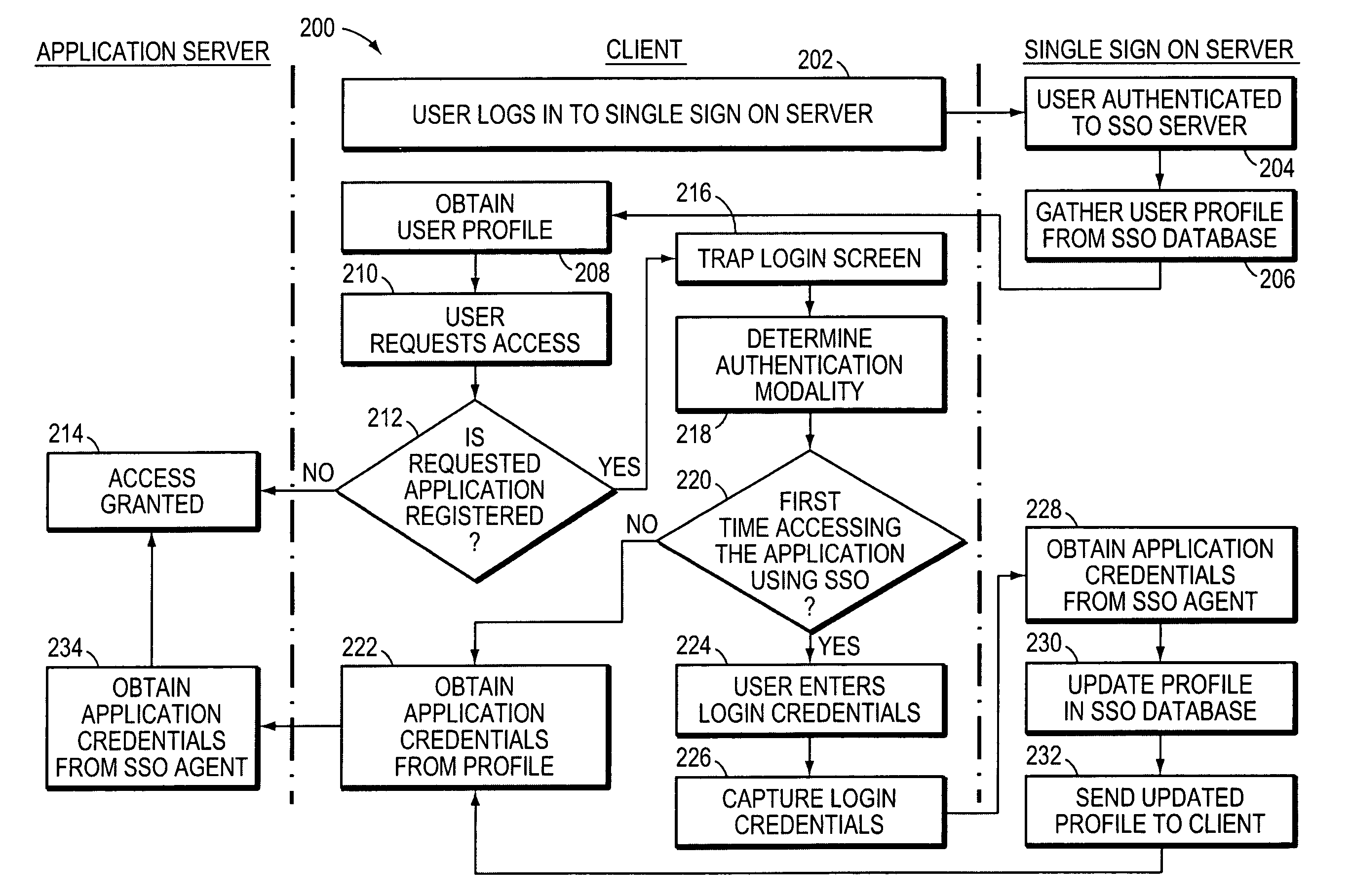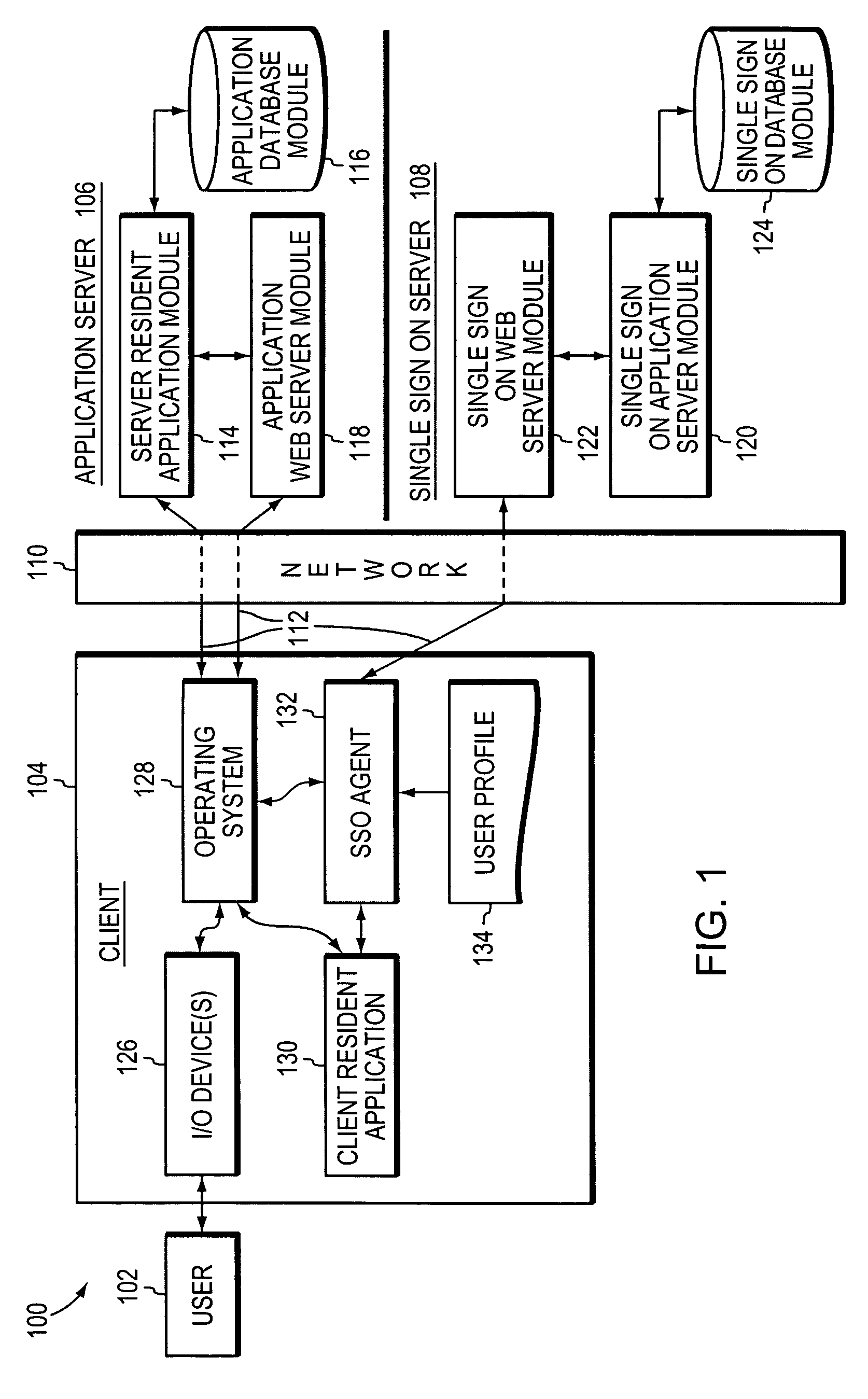System and method for automated login
a technology of automatic login and system, applied in the field of computer system control, can solve the problems of increasing the number of computer applications, and increasing the number of applications requiring user authentication, etc., and reducing the security of information technology infrastructur
- Summary
- Abstract
- Description
- Claims
- Application Information
AI Technical Summary
Benefits of technology
Problems solved by technology
Method used
Image
Examples
Embodiment Construction
[0018]In broad overview, FIG. 1 illustrates an embodiment of a system 100 to automate the login process to and to audit the user's activity within one or more applications in accordance with the invention. The system 100 includes a first computing system (a “client”) 104, a second computing system (an “application server”) 106 and a third computing system (a “single-sign-on server”) 108, all in communication with a network 110. The client node 104 is used by one or more users, indicated graphically at 102. The client node 104, the application server 106 and the single-sign-on server 108 are in communication with the network 110 using communication channels 112.
[0019]For example, the communication channels 112 can connect the client 104 to a local-area network (LAN), such as a company Intranet, a wide area network (WAN) such as the Internet, or the like. The client 104 and servers 106, 108 communicate with the network 110 through the communication channels 112 using any of a variety ...
PUM
 Login to View More
Login to View More Abstract
Description
Claims
Application Information
 Login to View More
Login to View More - R&D
- Intellectual Property
- Life Sciences
- Materials
- Tech Scout
- Unparalleled Data Quality
- Higher Quality Content
- 60% Fewer Hallucinations
Browse by: Latest US Patents, China's latest patents, Technical Efficacy Thesaurus, Application Domain, Technology Topic, Popular Technical Reports.
© 2025 PatSnap. All rights reserved.Legal|Privacy policy|Modern Slavery Act Transparency Statement|Sitemap|About US| Contact US: help@patsnap.com



